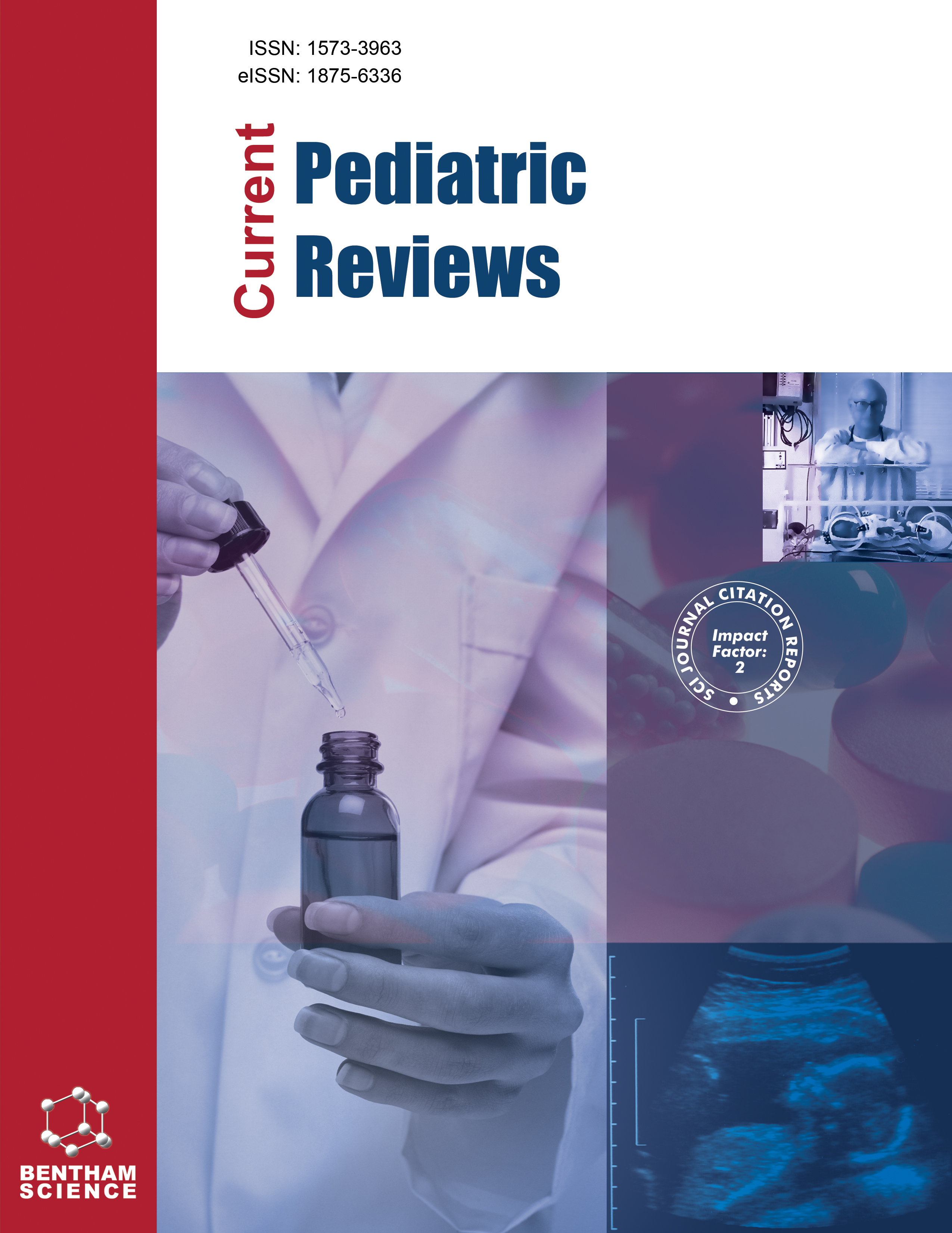- Home
- A-Z Publications
- Current Pediatric Reviews
- Previous Issues
- Volume 13, Issue 1, 2017
Current Pediatric Reviews - Volume 13, Issue 1, 2017
Volume 13, Issue 1, 2017
-
-
The Price of the Successful Treatment of Pediatric Malignancies
More LessRecent improvements in therapy of children with cancer have resulted in an increase in cure rates which lead to long-term survivorship. Assessment of short- and long-term complications and late effects of cancer therapies is accomplished by pediatric oncologists and multi-disciplinary team, including continuation of care from pediatric to adult primary care. The late complications of cancer treatment includ Read More
-
-
-
Contemporary Pediatric Palliative Care: Myths and Barriers to Integration into Clinical Care
More LessAt least 20 million children would benefit from Pediatric Palliative Care (PPC) annually, and 8 million children would need specialized PPC services. In the USA alone, more than 42,000 children 0-19 years died in 2013, fifty-five percent of them infants younger than 1 year. This article aims to critically review eight common assumptions, myths and barriers, which may hinder the implementation of PPC into the care of a child wi Read More
-
-
-
Improving Cancer Care for Children in the Developing World: Challenges and Strategies
More LessCancer is a global health problem particularly in developing countries where the burden of cancer is ever increasing and claiming the lives of about 100,000 children under the age of 15 years every year. Majority of these occur in the Low and Middle Income Countries (LMICs) where 90% of world children live. Contributing factors to this trend is the reduction of communicable diseases and emergence of new infections, impro Read More
-
-
-
The Impact of Cancer and its Treatment on the Growth and Development of the Pediatric Patient
More LessAuthors: Sarah Brand, Joanne Wolfe and Chase SamselBackground: Cancer treatment can have profound effects on the growth and development of pediatric patients. Different models of psychosocial development and behavioral treatment approaches aid children receiving medical treatment. Providing education, anticipatory guidance, and individualized support to child and their families is a psychosocial standard. Objective: Clarify the different models of psychosocial develo Read More
-
-
-
Secondary Neoplasms in Children Treated for Cancer
More LessAuthors: Rejin Kebudi and Gul Nihal OzdemirThe survival of children with cancer has improved dramatically in the last decades. Survivors of childhood cancer are at increased risk of long-term complications of therapeutic exposure. Second malignant neoplasms are one of the most severe side effects of cancer treatment. The frequency and type of secondary cancers may vary depending on the initial diagnosis, treatment administered and genetic predisposition. This revi Read More
-
-
-
Five Pediatric Cancers – Update on Genetic Implications
More LessAuthors: Stacy Cooper, Jeffrey Rubens and Joann BodurthaPediatric cancer has undergone significant improvements in survival over the past several decades, in part due to a better understanding of the underlying genetic aberrations of each oncologic diagnosis, which has allowed for more effective targeted therapies. Pediatric brain tumors, leukemia, lymphoma, Wilms tumor, and retinoblastoma are exemplary pediatric cancers that each has specific epidemiology regarding Read More
-
-
-
Management of Pneumonia in the Pediatric Critical Care Unit: An Area for Antimicrobial Stewardship
More LessAuthors: Aimee M. Dassner, David P. Nicolau and Jennifer E. GirottoBackground: Pediatric pneumonia is one of the most common causes of childhood infection requiring hospitalization and is a substantial driver of antimicrobial use among hospitalized children. About 12-20% of pediatric patients hospitalized with community-acquired pneumonia (CAP) require critical care. Additionally, nosocomial pneumonias (i.e. hospital-acquired and ventilator- associated pneumonias) are responsible for 15- Read More
-
-
-
Newborn Bilirubin Screening for Preventing Severe Hyperbilirubinemia and Bilirubin Encephalopathy: A Rapid Review
More LessAccording to the 2004 American Academy of Pediatrics guideline on the management of hyperbilirubinemia, every newborn should be assessed for the risk of developing severe hyperbilirubinemia with the help of predischarge total serum bilirubin or transcutaneous bilirubin measurements and/or assessments of clinical risk factors. The aim of this rapid review is 1) to review the evidence for 1) predicting and preventing seve Read More
-
Volumes & issues
-
Volume 21 (2025)
-
Volume 20 (2024)
-
Volume 19 (2023)
-
Volume 18 (2022)
-
Volume 17 (2021)
-
Volume 16 (2020)
-
Volume 15 (2019)
-
Volume 14 (2018)
-
Volume 13 (2017)
-
Volume 12 (2016)
-
Volume 11 (2015)
-
Volume 10 (2014)
-
Volume 9 (2013)
-
Volume 8 (2012)
-
Volume 7 (2011)
-
Volume 6 (2010)
-
Volume 5 (2009)
-
Volume 4 (2008)
-
Volume 3 (2007)
-
Volume 2 (2006)
-
Volume 1 (2005)
Most Read This Month
Article
content/journals/cpr
Journal
10
5
false
en


